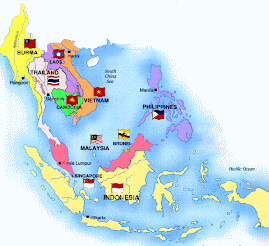Date: Fri, 26 Oct 2018 20:30:58 -0400
From: Julien Winter
To: Discussion of biomass cooking stoves (stoves@lists.bioenergylists.o
Cc: Mahbubul Islam, Dean Still, vhrapp
Subject: [Stoves] Short Documentary on TLUD and Biochar in Bangladesh (in Bangla)
Hi folks;
Here is a short doc on TLUDs and biochar in Bangladesh. It is in Bangla,
but I am sure we can all understand the body language for 'migrating
pyrolytic front', 'cation exchange capacity', and 'sodium chloride'.
https://youtu.be/mxuVUV0_Des
The significance of this video is that Bangladesh is a nascent hot-spot of
TLUD and biochar research, because it is probably the most ideal country in
the World for these technologies: 3 crops per year, low organic matter
soils, 80% of population cooking with biomass, >1000 people / km?,
impending loss of land to sea level rise, and plenty of scientists.
It is great the way this video includes both the university professors,
farmers and lots of women. The CCDB project has collected data showing
that university professors increase the self-esteem of women TLUD users, so
it is recommended that professors should be applied liberally in the
countryside to increase cookstove acceptance.
I hope subtitles in English are forthcoming.
Cheers,
Julien.
--
Julien Winter, Cobourg, ON, CANADA
From: Julien Winter
To: Discussion of biomass cooking stoves (stoves@lists.bioenergylists.o
Cc: Mahbubul Islam, Dean Still, vhrapp
Subject: [Stoves] Short Documentary on TLUD and Biochar in Bangladesh (in Bangla)
Hi folks;
Here is a short doc on TLUDs and biochar in Bangladesh. It is in Bangla,
but I am sure we can all understand the body language for 'migrating
pyrolytic front', 'cation exchange capacity', and 'sodium chloride'.
https://youtu.be/mxuVUV0_Des
The significance of this video is that Bangladesh is a nascent hot-spot of
TLUD and biochar research, because it is probably the most ideal country in
the World for these technologies: 3 crops per year, low organic matter
soils, 80% of population cooking with biomass, >1000 people / km?,
impending loss of land to sea level rise, and plenty of scientists.
It is great the way this video includes both the university professors,
farmers and lots of women. The CCDB project has collected data showing
that university professors increase the self-esteem of women TLUD users, so
it is recommended that professors should be applied liberally in the
countryside to increase cookstove acceptance.
I hope subtitles in English are forthcoming.
Cheers,
Julien.
--
Julien Winter, Cobourg, ON, CANADA













